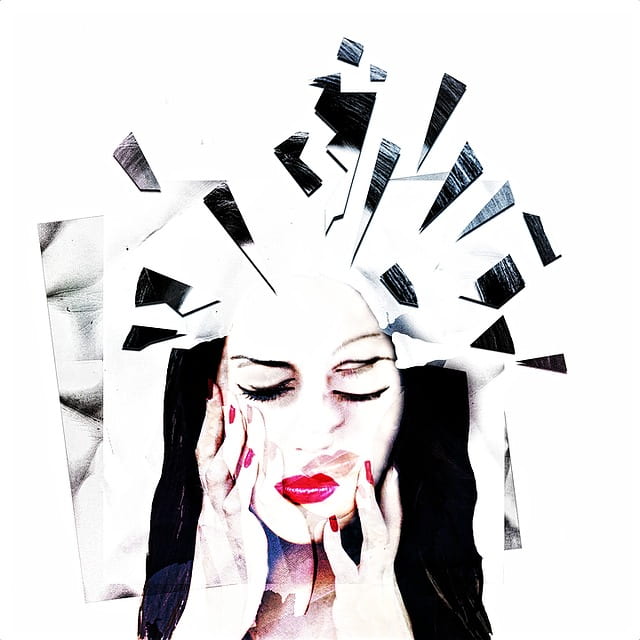
This blog uses direct quotes from survivors that may be explicit for some readers.
What is Sex Trafficking?
The U.S. Department of State defines sex trafficking as “the recruitment, transportation, provision, or the obtaining of a person for a commercial sex act. The commercial sex act is induced by force, fraud, or coercion, where the survivors are pushed to perform such acts while under 18 years of age”. Sexual trafficking relies heavily on the control of the victim’s vulnerability. According to the Trafficking Hotline, about 10,949 cases of human trafficking were reported in the year 2018 alone. Among those cases, 7,859 account for sex trafficking (approximately 71.78%). Those who are survivors of human trafficking report experiencing severe cases of abuse and extortion sex practices. As a result, these individuals’ lives are continuously exposed to physical and sexual trauma.
So how does sex trafficking occur? After individuals are lured by their traffickers, victims are absorbed into the underground and uncontrolled sectors of the economy where wage, health, and safety law violations routinely happen. In these sectors, individuals are hooked into prostitution, pornography, and other forms of the commercial sex industry. Those who have survived human trafficking explain how hard it is to escape the trafficker. For example, in an interview with Kristina Kuzmic, Oree describes her experiences as a victim of human trafficking,
Warning Explicit Content.
“And he grabbed me by my hair and drugged me down the street. My knees was scraping the floor. There was other women out there, nobody did anything. When you have been forced to sleep with 7 to 15 men and be raped and be 11 years old, I was like slowly dying. And after the first night, you suppress those feelings because any inch of hope that you have, any sense of “I can get out,” any feeling of “There’s a God,” any feeling of “I don’t deserve this,” you get beat, You ain’t going to survive out there. By the time I was 12 years old within a year, I was already raped over 4,000 times.”
In Oree’s case, she explains that she was not able to get away from her trafficker until a man named Jim Carson came to her rescue when she was 14 years old. In her interview, Oree emphasizes, “It was never a choice. It’s not a choice for these kids…they are children whose dreams and innocence was stolen and snatched from them.” Regardless of the form of their exploitation, trafficked victims suffer extreme abuse that often results in physical and mental trauma.
Traffickers use various means, such as pregnancy, to coerce trafficked victims, This ensures that the individual is emotionally bound and remains dependent on the trafficker to meet her own and her child’s needs. In an interview, Rebecca Bender, another survivor of sex trafficking narrates her experiences as follows,
“When you have a trafficker that’s at home with your child and says, if you don’t bring home $1500, you’re going to find your daughter out on the corner. I think I was probably more frightened to go home than I was to be in the room because if you got robbed, it was your fault for being stupid. If you get raped, it was your fault for not watching your back. Anything that happened to you was typically your fault, and you incurred more punishment for allowing these things to happen.”
Trafficked victims, like Bender, often blame themselves for their situation, therefore making it even harder for them to escape their traffickers. Some other reasons victims find it hard to leave include:
- Threats of violence against the victim’s family and loved ones.
- Traffickers requiring their victims to repay all debt (real or not real) before they can be liberated.
- Traffickers manipulate victims to believe they love them.
- Victims may be unfamiliar with the language of the country they are in and often do not know how to get around.
Sex Trafficking and Mental Health.
Prolonged captivity has been found to cause psychological trauma and contribute to the development of post-traumatic stress disorder (PTSD). This is because traffickers instill psychological trauma through terror, helplessness, and continuous destruction of the victim’s self-esteem. Constant death threats and physical abuse, followed by inconsistent and unpredictable outbursts of violence, results in significant mental health consequences for trafficked victims. For PTSD, symptoms either present themselves within the first three months after a traumatic event or can go for months to years without showing any symptoms, making it harder to detect and diagnose. In addition to PTSD, victims of human trafficking have been found to suffer from other anxiety and mood disorders, including panic attacks, obsessive-compulsive disorder, generalized anxiety disorder, and major depressive disorder. There is also an increased risk for the development of dissociative disorders.
Substance abuse disorder is also at the top of the list. While some victims of trafficking may report prior substance addictions, the majority of victims who reported alcohol and drug use said they began using drugs after they were in their trafficking situations. Other victims report being forced into drugs by their traffickers or using drugs as a coping mechanism.
Types of Treatment.
Understanding the effects of human trafficking on the mental health of victims requires long-term comprehensive therapy. Some of the evidence-based treatment options for PTSD include:
- Cognitive Therapy
- Challenges dysfunctional thoughts based on irrational or illogical assumptions.
- Cognitive-Behavioral Therapy
- Combines cognitive therapy with behavioral interventions such as exposure therapy, thought breathing techniques.
- Exposure Therapy
- Aims to reduce anxiety and fear through the confrontation of thoughts or actual situations related to the trauma.
- Eye Movement Desensitization and Reprocessing
- Combines general clinical practice with brief imaginal exposure where a client is asked to imagine feared images or situations, and cognitive restoration. Rapid eye movement may be induced.
- Stress Inoculation Training
- Combines psycho-education with anxiety management techniques such as relaxation training, breathing retraining, and thought stopping.
Language barriers and transportation issues may hinder adequate treatment. Service providers express that clients who speak other languages have difficulty receiving care or even seeking care. More importantly, transportation barriers may result in missing appointments, which interferes with treatment. When looking at language, culture also plays a role. Just because someone speaks the same language as the victim, does not necessarily mean that services offered will be culturally appropriate. While speaking the same language as clients can help with service provision, other pieces of one’s culture are often overlooked. For example, some cultures may require that women only see women providers, and therefore it becomes difficult when the only provider available is male. In addition, some victims may also fear talking about their experiences because of fear of stigma and shame. Traumatic events may also affect the memories and may negatively influence the individual’s ability to recall events. Lastly, longer wait times for psychotherapy and funding cuts continue to be a challenge to both mental healthcare professionals and patients.
How Can Treatment be Improved?
I believe it is important to offer trafficking-specific training to professionals. This will help increase awareness of trafficking as well as inform the staff of available resources. Acknowledging the gender of patients when writing out assessments is also important because it will lead to better practice by providing more treatment options for victims. There is also the need to examine both social and psychological factors when responding to mental health needs. This will help improve communication between services as well as offer more insight into what type of treatment one should receive. Furthermore, there is a need for more research to help explore the ways in which healthcare professionals identify victims and determine what kind of care one receives. This will allow for the generalization of mental health practices and procedures into other disciplines. While there is still plenty to improve, it is important to note that there is work being done to enhance the mental health care of trafficked individuals.
The information above does not fully cover what victims of human trafficking experience before, during, and after they escape their traffickers. If you see something suspicious, call the Blue Campaign with your tip and be sure to include the car tag and vehicle description.
Call: 1-866-347-2423
Rape Hotline: 1-800-656-4673
Trafficking Hotline: 1-800-373-7888
Suicide Hotline: 1-800-273-8255

